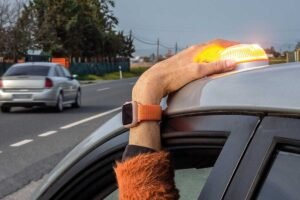Verifying someone’s identity has never been more important—or more challenging. As online transactions, digital banking, and remote onboarding become the norm, financial institutions and service providers face mounting pressure to protect their platforms from fraudsters and money launderers. The key to this defense? Strong, secure, and scalable identity verification systems.
These systems aren’t just technical add-ons—they’re frontline tools in the global fight against financial crime. Regulators are tightening Know Your Customer (KYC) and Anti-Money Laundering (AML) requirements worldwide, and businesses that fail to comply face heavy fines, reputational damage, and loss of customer trust. Robust identity verification is no longer optional—it’s a necessity.
Table of contents
The Evolution of Identity Verification: From Paper to Biometrics
Not long ago, verifying a person’s identity was a manual, paper-based process. New customers were required to show up in person, submit physical documents, and sign forms with pen and ink. While effective to a point, these traditional methods were slow, inconsistent, and prone to forgery.
Today, identity verification has become more sophisticated, leveraging digital tools that balance security with user experience. The evolution has moved from scanning passports and utility bills to using biometric data, artificial intelligence (AI), and real-time database checks. In some markets, identity can now be verified in seconds using a selfie video, a live document scan, or even behavioral analytics.
Biometric verification, such as facial recognition, fingerprint scanning, or iris detection, has emerged as a particularly powerful layer of defense. These methods are difficult to replicate or steal and can be used across devices with minimal friction. AI-enhanced systems can flag deepfakes, detect spoofing attempts, and continuously improve by learning from suspicious patterns.
This transition from static to dynamic verification reflects a deeper shift: identity is no longer just something you prove once—it’s something you continually assert across your digital life.
The Role of Identity Verification in Combating Money Laundering
Money laundering is a multi-trillion-dollar problem that undermines financial systems and fuels illegal activities worldwide. Criminals often attempt to create fake or “clean” identities to move illicit funds through legitimate channels. This is where robust identity verification becomes critical—not just for compliance, but for risk prevention.
Know Your Customer (KYC) protocols require financial institutions to confirm the true identity of their clients, assess their risk profile, and monitor transactions for unusual behavior. Effective identity verification systems are the foundation of these procedures. Without reliable data about who a person is, no risk analysis can be trusted.
In 2025, many countries have integrated identity verification into national AML frameworks. Regulators in the EU, U.S., and Asia now require digital onboarding processes to include government ID verification, facial recognition, liveness detection, and proof of address—often all in real time.
These tools don’t just help catch bad actors at the door. They also support ongoing customer due diligence (CDD), ensuring that individuals aren’t using stolen or synthetic identities, or changing their behavior in ways that might signal fraud.
By combining verification with transaction monitoring and automated alerts, financial institutions are building layered defenses that make laundering money significantly more difficult—and easier to detect when it happens.
Key Technologies Powering Modern Identity Systems
Several technologies are driving the new generation of identity verification. Each plays a unique role, and together they create a multi-dimensional approach to security.
- Optical Character Recognition (OCR): This enables systems to extract data from IDs and documents instantly, speeding up onboarding and reducing errors. Modern OCR tools are now capable of reading documents in multiple languages and scripts.
- Biometric Authentication: Facial recognition, fingerprint scanning, and voice recognition provide a highly secure way to match users with their identity documents. They’re widely used in mobile banking apps and border control systems.
- Liveness Detection: To prevent spoofing via photos or videos, liveness checks require users to blink, smile, or move their heads during verification. These checks are validated by AI, which can detect fakes with increasing accuracy.
- Database Cross-Referencing: Identity information is verified against government records, credit bureaus, and global watchlists to detect inconsistencies or red flags.
- Blockchain Verification: Still emerging, blockchain offers potential for decentralized identity systems that are portable, secure, and tamper-proof. These systems could revolutionize KYC processes by giving users control over their data while maintaining verifiability.
The best identity verification systems combine these tools into seamless user experiences—quick enough not to drive customers away, but thorough enough to satisfy regulators and security experts.
Balancing Security and User Experience
One of the biggest challenges in implementing robust identity verification is finding the right balance between security and usability. Users expect onboarding to be smooth, fast, and mobile-friendly. But businesses must also satisfy strict compliance standards and ensure fraud prevention is airtight.
Too much friction—like requiring in-person visits, excessive document uploads, or long waiting times—can lead to abandonment and lost customers. Too little scrutiny, and businesses open the door to fraudsters.
In 2025, many companies are adopting a risk-based approach. This means tailoring the level of identity verification to the customer’s risk profile. A user opening a basic savings account may face fewer checks than someone applying for a high-limit credit card or making large crypto transfers.
Adaptive identity systems use AI to determine which verification steps are needed in real time. For example, a customer logging in from their usual device may not need to re-verify, while someone logging in from a foreign IP address or a new phone might be prompted for biometric confirmation.
The result is a smarter system—one that recognizes when to be strict and when to step aside. This balance is key not only for fraud prevention but for building trust with customers.
Regulation and Global Standards Shaping the Future
As fraud and money laundering tactics evolve, so do the regulations meant to stop them. In 2025, governments and international organizations are pushing for greater harmonization in digital identity verification standards, aiming to reduce loopholes and encourage global cooperation.
The Financial Action Task Force (FATF) continues to update its guidelines for digital identity use in AML processes, emphasizing the importance of secure, privacy-preserving technologies. The European Union’s eIDAS 2.0 regulation is expanding cross-border digital identity recognition, allowing citizens to use national e-identities in multiple member states.
In the U.S., the FinCEN is pushing for stricter Beneficial Ownership disclosures, requiring businesses to identify the real people behind corporate structures. Meanwhile, emerging markets in Africa, Southeast Asia, and Latin America are leapfrogging traditional ID systems, moving directly into mobile-based and biometric identity solutions.
Businesses must stay informed and compliant across jurisdictions. This means working with identity providers that meet international certifications like ISO 30107-3 (biometric presentation attack detection) and SOC 2 (data security and privacy).
The future of identity verification is not just about technology—it’s about governance, ethics, and building systems that are secure and inclusive. As digital ID becomes central to economic and civic life, the responsibility of protecting it grows exponentially.
Conclusion: Identity as the New Perimeter
In the battle against fraud and money laundering, identity has become the new security perimeter. Where firewalls once defined the edges of a network, today it’s the individual—verified, authenticated, and trusted—who forms the first and last line of defense.
Robust identity verification systems in 2025 are smarter, faster, and more layered than ever before. They rely on advanced technology but also on good policy, sound design, and a clear understanding of the evolving threat landscape. For businesses, regulators, and users alike, the stakes are high—but so is the potential for innovation and safety.
As digital interactions continue to expand into every corner of life, one thing is clear: verifying who we are is no longer a formality. It’s a cornerstone of trust in the digital age.














Comentarios
One response to “Robust Identity Verification Systems to Prevent Fraud and Money Laundering”
[…] debates about internet freedom, surveillance, and cybersecurity continue to evolve, VPNs are playing an increasingly important role in shaping the future of the […]